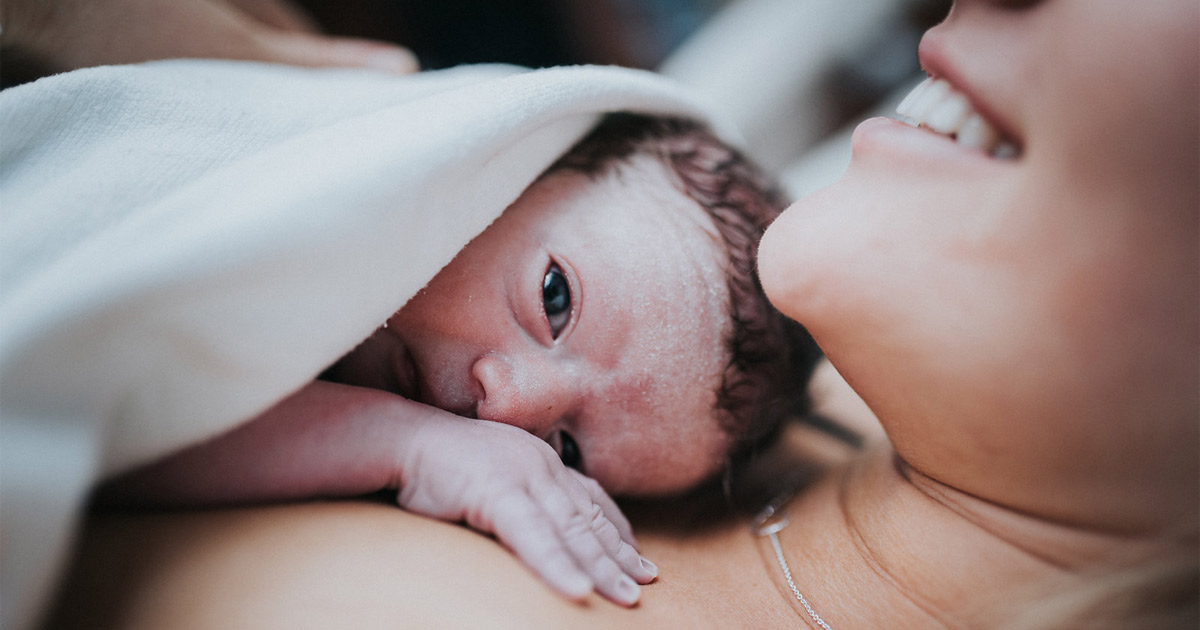
Katie Mathis—katiemathisphoto.com
Homebirth, Now and Then
Editor’s note: This article first appeared in Midwifery Today, Issue 122, Summer 2017.
Subscribe to Midwifery Today Magazine
Homebirth. What do we think of when we mention homebirth? Many years ago the imagery would have been of a group of supportive and nurturing people gathering around the laboring mom, one nourishing mom and the birth team with food and drink, maybe one taking photographs of the birth or video-recording, another caring for any children present. Before we had official doulas, one or two would be present (including the “lay” midwife and helper) to care for mom by massaging her and giving her helpful suggestions such as to sip herbal tea or water, soak in a tub or go for a walk; discussing fears or anxieties with her; lighting candles; helping change position and monitoring baby’s progress (mostly externally) by observing mom and listening periodically to heart tones with a fetoscope. I still teach and work in this fashion: what has come to be known as “traditional midwifery.”
Over the past 35 years, homebirth has come to mean—for me—normal physiological birth. This removes timetables from every phase of labor. For example, one woman may labor for a relatively short time to get to second stage and have a longer second stage with a long lull before Mom even has surges, whereas another Mom—even a sister—may have a long first stage and a very quick second stage. Because I have had the privilege of attending thousands of births, I have observed mothers of even 15 children have very different experiences from one birth to another.
As birth workers, the more experience we have, the more comfortable we become with letting labor and birth run its course, in its own time. The end is similar: a happy though tired mom and a suckling baby glad to be on its mother’s breast skin to skin. Because I have had the honor of working in many different cultures, I have seen women dancing, swimming, eating, groaning—alone or intimate with a partner. One thing all had in common was the need for love, respect, privacy and being allowed to have an undisturbed birthing process. In the ’70s and early ’80s, many of us did not have access to gloves and we believed a woman rarely needed to be examined internally. Most of our births were done with no vaginal exam. Birth pools have become common in the last two decades, but prior to that we used a water trough or an old claw-foot bathtub when available.
Birth really hasn’t changed in centuries—only the culture and attitude around birth has. With the increase of licensure and regulations, change has led to birth guidelines. There is a timetable for first stage, second stage and third stage. Guidelines rule out homebirth for twins, breech, VBAC, moms over 40 and prolonged rupture of membranes! How can a birth be normal enough to fit all of today’s criteria for safe, normal, and non-interventive birth? Another huge factor in moving birth out of the home is economics. Finding supportive physician backup can be very difficult. Medicaid is difficult to work with, as well as the many insurance companies that refuse to cover out-of-hospital or birth center births.
Today in many places around the world midwives are required to examine often, keep labor progressing at a regulated pace and do procedures that are counterintuitive (e.g., episiotomies). Many have come to realize that homebirth is the only option for a mother to have autonomy in birth.
In an interview with a young midwife from Finland, we agreed: Homebirth should mean not interfering with the birth process, allowing the woman to choose her birth attendants and her place and timing of how and when things happen. The midwife is the guardian to allow normal birth to happen.
Diane Goslin has been a traditional midwife since 1980 and has been to over 7000 births. She has birthed and raised 5 children and grandmothered 13—many of whom she has attended at their births. The 130 midwifery students she has trained and the thousands of mothers she has observed in pregnancy, labor and birth have been her best teachers!





















